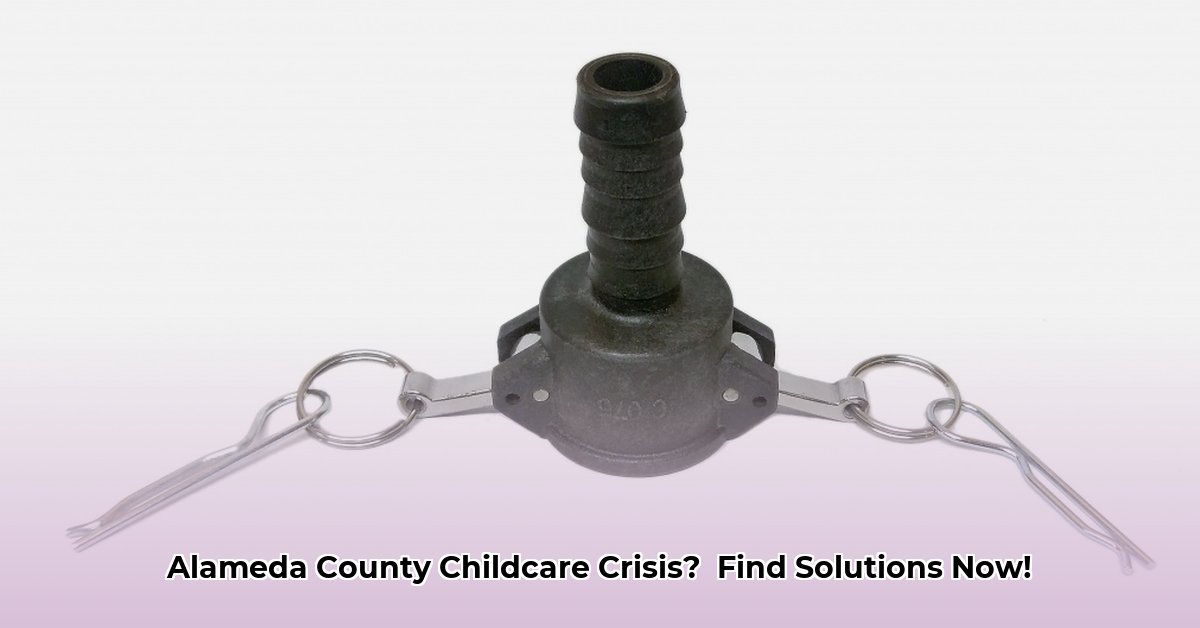
Navigating Alameda County's Childcare Landscape: Challenges and Opportunities
Finding affordable, high-quality childcare in Alameda County presents a significant challenge for many families. While resources exist, the gap between available care and the community's needs remains substantial, disproportionately affecting low-income families and those seeking multilingual services. This article explores the current state of childcare in Alameda County, highlights available resources, and proposes actionable steps towards improving access and affordability.
The Childcare Crunch: A County-Wide Shortage
Alameda County faces a critical childcare shortage. While organizations like the 4Cs (Child Care Coordinators) provide valuable referral services and connect families with resources, the sheer demand vastly outstrips the supply. This shortage manifests in long waitlists, limited availability of multilingual services, and financial strain on families. "The lack of affordable childcare is a major barrier to economic opportunity for many families in Alameda County," says Dr. Anya Sharma, Director of the Center for Childcare Research at the University of California, Berkeley. This isn't just about statistics; it's about families struggling to balance work and childcare, impacting their economic stability and their children's well-being.
Finding Help: Utilizing Available Resources
The 4Cs of Alameda County offers a crucial online directory (https://4calameda.org/), connecting families with licensed providers, financial assistance, and family support programs. The multilingual support makes it widely accessible. However, more robust data collection is needed to fully evaluate its effectiveness. How long are families waiting for placements? How does access vary across different regions of the county? Addressing these questions through rigorous data analysis is crucial for strategic resource allocation.
Supporting Childcare Providers: Investing in Our Future
Investing in childcare providers is investing in the future. Alameda County offers training, mentorship, and professional development opportunities to enhance service quality and provider retention. However, sustained investment and evaluation of these programs are essential to demonstrate their impact on quality of care and provider satisfaction. "Providing ongoing professional development and fair compensation is key to retaining skilled childcare providers," notes Ms. Maria Rodriguez, Executive Director of the Alameda County Childcare Association. This investment in our workforce directly translates to higher-quality childcare for our children.
Actionable Intelligence: A Roadmap to Better Childcare
Addressing Alameda County's childcare crisis demands a multi-faceted strategy:
Short-Term Actions (Within 1 Year):
- Increased Subsidies: Advocate for expanded funding for childcare subsidies, targeting low-income families and increasing the number of available slots.
- Provider Support: Enhance support for existing providers through competitive salaries, benefits packages, and streamlined licensing processes.
- Resource Mapping: Conduct a comprehensive needs assessment to identify childcare deserts (areas with limited access) and optimize resource allocation.
- Improved Outreach: Expand awareness of existing resources, including the 4Cs directory, through community outreach and multilingual communication channels.
Long-Term Actions (3-5 Years):
- Strategic Planning: Develop a county-wide strategic plan for childcare access, including workforce development, public-private partnerships, and innovative financing models.
- Policy Reform: Implement policy changes that make high-quality childcare more accessible and affordable, including increased wages for providers and broader eligibility for subsidy programs.
- Data-Driven Evaluation: Implement continuous monitoring and evaluation of initiatives to assess impact, refine strategies, and ensure accountability.
- Collaboration: Foster ongoing collaboration between families, providers, policymakers, and community organizations.
Risk Assessment Matrix: Identifying and Mitigating Challenges
Addressing the childcare crisis requires a proactive approach to managing potential risks:
| Risk Factor | Likelihood | Impact | Mitigation Strategy |
|---|---|---|---|
| Insufficient funding for subsidies | High | Severe | Advocate for increased funding; explore diverse funding streams (e.g., philanthropy). |
| Shortage of childcare providers | High | Severe | Invest in workforce development; offer competitive salaries and benefits. |
| Inefficient resource allocation | Moderate | Moderate | Conduct regular needs assessments; utilize data-driven resource allocation. |
| Lack of awareness of resources | Moderate | Moderate | Broaden outreach efforts; utilize diverse communication channels (multilingual materials). |
How to Find Affordable Childcare in Alameda County: A Practical Guide
Finding affordable childcare requires a multi-pronged approach:
- Utilize the 4Cs: Begin with the 4Cs online directory, providing detailed information about your needs.
- Network: Tap into personal networks (friends, family, community groups) for recommendations.
- Explore Subsidy Programs: Investigate eligibility for county or state-sponsored childcare subsidies.
- Creative Solutions: Consider shared childcare arrangements, flexible hours, or part-time options.
- Thorough Assessment: Evaluate potential options based on location, cost, environment, licensing, and reviews.
The journey to finding affordable childcare in Alameda County requires persistence and proactive engagement. By working collaboratively and supporting existing resources while advocating for essential policy changes, we can create a community where every child has access to the nurturing care they need to thrive.